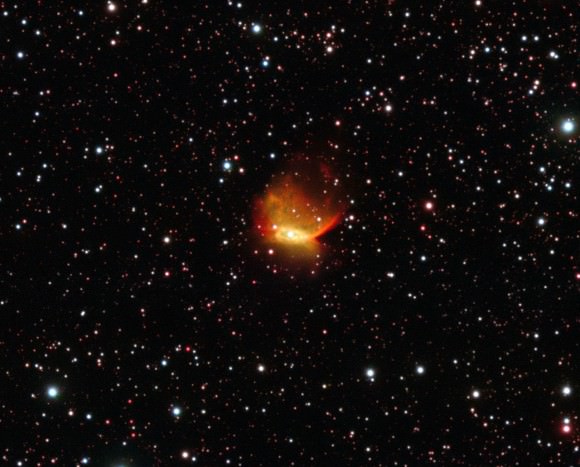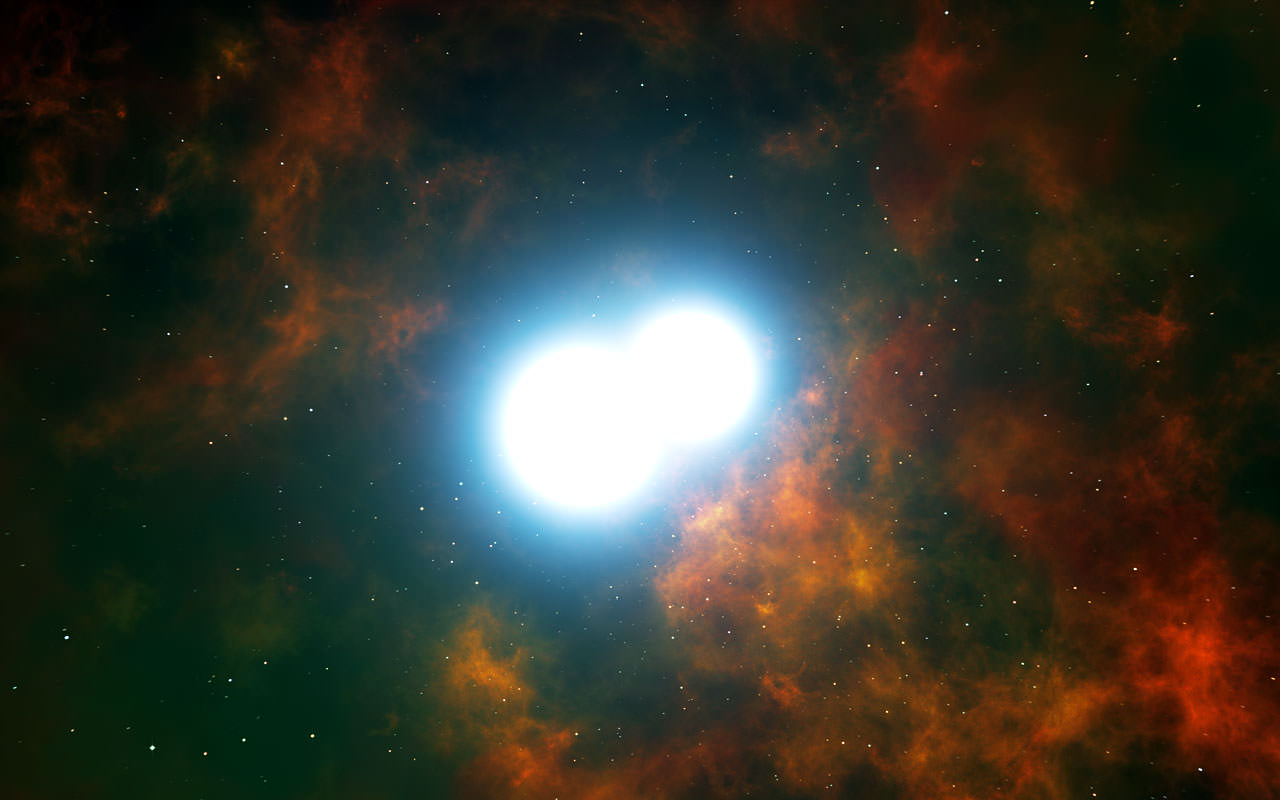Two white dwarfs circle around one other, locked in a fatal tango. With an intimate orbit and a hefty combined mass, the pair is ultimately destined to collide, merge, and erupt in a titanic explosion: a Type Ia supernova.
Or so goes the theory behind the infamous “standard candles” of cosmology.
Now, in a paper published in today’s issue of Nature, a team of astronomers have announced observational support for such an arrangement – two massive white dwarf stars that appear to be on track for a very explosive demise.
The astronomers were originally studying variations in planetary nebulae, the glowing clouds of gas that red giant stars throw off as they fizzle into white dwarfs. One of their targets was the planetary nebula Henize 2-428, an oddly lopsided specimen that, the team believed, owed its shape to the existence of two central stars, rather than one. After observing the nebula with the ESO’s Very Large Telescope, the astronomers concluded that they were correct – Henize 2-428 did, in fact, have a binary star system at its heart.

“Further observations made with telescopes in the Canary Islands allowed us to determine the orbit of the two stars and deduce both the masses of the two stars and their separation,” said Romano Corradi, a member of the team.
And that is where things get juicy.
In fact, the two stars are whipping around each other once every 4.2 hours, implying a narrow separation that is shrinking with each orbit. Moreover, the system has a combined heft of 1.76 solar masses – larger, by any count, than the restrictive Chandrasekhar limit, the maximum ~1.4 solar masses that a white dwarf can withstand before it detonates. Based on the team’s calculations, Henize 2-428 is likely to be the site of a type Ia supernova within the next 700 million years.
“Until now, the formation of supernovae Type Ia by the merging of two white dwarfs was purely theoretical,” explained David Jones, another of the paper’s coauthors. “The pair of stars in Henize 2-428 is the real thing!”
Check out this simulation, courtesy of the ESO, for a closer look at the fate of the dynamic duo:
Astronomers should be able to use the stars of Henize 2-428 to test and refine their models of type Ia supernovae – essential tools that, as lead author Miguel Santander-García emphasized, “are widely used to measure astronomical distances and were key to the discovery that the expansion of the Universe is accelerating due to dark energy.” This system may also enhance scientists’ understanding of the precursors of other irregular planetary nebulae and supernova remnants.
The team’s work was published in the February 9 issue of Nature. A copy of the paper is available here.


“two massive white dwarf stars”
Classic oxymoron
“…the system has a combined heft of 1.76 solar masses – larger, by any count, than the restrictive Chandrasekhar limit”
So, this implies that it won’t be a standard candle. Doesn’t that mess with the evidence basis of our current cosmology?
only 699 million years 364 days left
Get the popcorn ready!